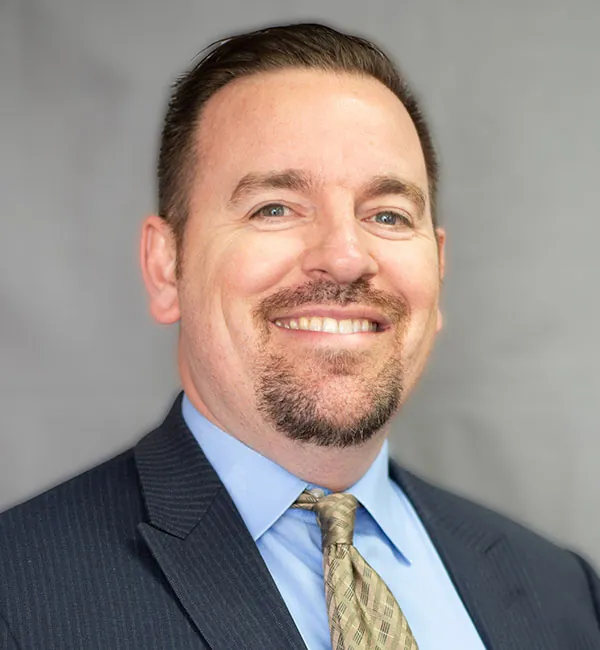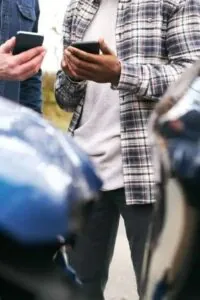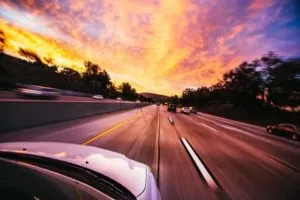The freeway that won the coveted Hayes Award for the nation’s best asphalt-paved surface sees more than its share of accidents. Highway 70 replaced the old U.S. Highway 40. The first section opened in 1959; construction was complete by 1968. Today’s cars and trucks are much faster and heavier than they were in the 1960s. Nevertheless, mostly due to funding concerns, much of Interstate 70, especially the parts of this freeway that run through Southwest Ohio, have not been substantially updated since dignitaries cut the ribbon.
Highway infrastructure has not changed much since the early 1970s, but the legal landscape has changed significantly. Back then, victims/plaintiffs won most court cases. Therefore, favorable out-of-court settlements were largely there for the taking. But the victim/plaintiff’s winning percentage has dropped since then, giving insurance companies the edge. Therefore, only a hard-working Hamilton personal injury lawyer can obtain maximum compensation for your serious injuries.
Car Crash Injuries
Powerful vehicles cause serious injuries in high-speed collisions. Speed increases the risk and severity of the injury. Yet even a relatively low-speed wreck could cause such injuries. These injuries could occur during one of the frequent traffic jams on Highway 70.
Whiplash is a good example. The cervical spine may be the most vulnerable section of the most vulnerable part of the body. The spine is a long chain of bones and nerves that has almost no protection. A tiny amount of force could knock these bones and nerves out of alignment. The result is whiplash, a rather common car crash injury that is nevertheless hard to diagnose and treat.
This injury could even occur in a parking lot collision. The force of a wreck jostles the neck and causes whiplash. Initial whiplash symptoms include soreness and disorientation. Any person who has been in any wreck was sore and disoriented. So, instead of running tests, many doctors reassure their patients that the effects will pass and they will be fine.
A diagnostic test might not do much good anyway. Whiplash is a soft-tissue injury. Standard diagnostic tests, like X-ray exams, do not detect this injury.
Muscle tears and strains are also common soft-tissue injuries in low-speed wrecks. It is difficult for anyone, even a doctor, to tell the difference between a sore muscle and a torn muscle. This difficulty could cause serious problems. Muscle strains and tears are degenerative. Without prompt and proper treatment, doctors must often surgically correct these muscle injuries.
Whiplash is degenerative as well. What begins with neck soreness and disorientation could become permanent paralysis.
If doctors get in front of whiplash, extensive physical therapy usually reverses the effects of whiplash. At some point, however, surgery becomes necessary. Only a doctor who focuses on such conditions knows when to move from stage one to stage two.
Hamilton personal injury lawyers connect injury victims with top-notch doctors who know how to diagnose and treat car crash injuries like whiplash. Generally, these doctors charge nothing upfront for their professional services.
For a free legal consultation, call 513-894-3333
First Party Liability
Medical bills, car repair bills, and other accident-related expenses must be paid eventually. These victims should not have to pay these bills out of their own pockets. A Hamilton personal injury attorney can force the tortfeasor (negligent driver), or whether the tortfeasor’s insurance company to pay them, if a lawyer proves negligence, or a lack of care, by a preponderance of the evidence, or more likely than not.
Before we dive into the legal issues of a negligence case, let’s look at the emotional issues involved. These emotional issues are especially common in passenger injury claims. These victims do not want to “blame” the drivers, with whom they often have close personal relationships, for wrecks. Other victims do not see the point of filing a lawsuit, particularly if a government or private healthcare company paid most or all of their medical bills.
Negligence claims do not blame anyone for anything. These claims simply force drivers to take responsibility for their mistakes. We all make mistakes, and we must all face the consequences of those mistakes. When we were children, mommy and daddy often paid compensation if we broke the neighbor’s window. But we are grown-ups now. We must take responsibility.
Legal Issues
Ordinary negligence and negligence per se are the most common legal theories in Interstate 70 car wreck claims.
Basically, ordinary negligence is a lack of ordinary care. Most Ohio drivers have a duty of reasonable care in most situations. This legal responsibility is loosely based on the story of the Good Samaritan. Just like this man went out of his way to help an injured traveler, a driver must go out of their way to avoid an accident.
Negligence per se is a violation of a safety statute. Since the law establishes the standard of care, if a tortfeasor breaks a law and causes a wreck, the tortfeasor could be liable for damages as a matter of law.
Damages in both ordinary negligence and negligence per se cases usually include money for economic losses, such as medical bills, and noneconomic losses, such as pain and suffering.
Device distraction, one of the leading causes of car wrecks in Butler County, illustrates the difference between these two theories.
Ohio law only bans texting and driving. The law broadly defines “texting” as sending or reviewing any text-based message, such as a social media post. However, smartphones are good for a lot more than just texting. Activities such as talking on a phone, watching a video, and even making a video are legal in Ohio, at least for most drivers.
Tortfeasors who text, drive, and crash could be liable for damages as a matter of law. All other activities involve the ordinary negligence doctrine.
Click to contact our lawyers today
Evidence in Car Wreck Claims
A good Hamilton personal injury attorney can briefly review a case and develop a vision for maximum compensation, as outlined above. Then, compensation is a matter of planning your work and working on your plan.
Electronic evidence, like a device use log, is often critical in device distraction claims. This log could establish negligence per se. It almost conclusively proves that the tortfeasor was texting at the time of the crash. In an ordinary negligence case, this log shows the full extent of the tortfeasor’s negligence. If Sally spoke on her phone for a few seconds before a wreck, a jury might look the other way. If Sally was streaming season two of a Netflix series at the time of the crash, that is different.
Electronic evidence also includes a vehicle’s Event Data Recorder. Depending on the vehicle’s make and model, an EDR captures and records information like:
- Steering angle,
- Brake application,
- Vehicle speed, and
- Engine RPM.
Attorneys put these seemingly random bits of evidence together like the pieces of a jigsaw puzzle. The result is a clear picture the jury can use during deliberations.
Electronic evidence is very convincing in court. A witness could say she saw Sally using her cell phone. A device log establishes the type of use. Additionally, electronic evidence resonates well with tech-savvy Ohio jurors.
This vital evidence is not always available. Some legal and practical hurdles usually crop up in a Butler County injury claim.
Ohio has very strong information privacy laws. Attorneys and other non-owners usually cannot touch EDRs and device usage logs unless a judge issues a court order. Furthermore, insurance companies often “accidentally” destroy this evidence, and owners often “accidentally” delete device use logs. Attorneys must quickly send spoliation letters, which create a legal duty to preserve evidence in these situations.
As for the practical hurdles, EDRs are very sophisticated devices. Attorneys need the proper tools to tap into these devices and download the information they contain.
Non-electronic evidence in a Highway 70 accident usually includes the police accident report, medical bills, and witness statements. The location of the accident (highway vs. surface street) affects this evidence.
We discussed low-speed accidents above. Frequently, emergency personnel does not come to such accident scenes. They are always on the scene of high-speed wrecks but do not prepare reports. Instead, their priorities are tending to injured victims and securing the scene. Writing a report is an afterthought.
Medical bills are usually higher after an accident on a remote stretch of Highway 70. Frequently, emergency responders must airlift these victims to hospitals. A brief helicopter ride could cost over $40,000.
Medical bills in these wrecks often focus on diagnostic and cost information since there is so much of this information to convey. As a result, these bills often do not have treatment notes and other information that indicates the victim’s pain level.
Witness statements are hard to come by in freeway wrecks. Most people do not pull over to the side of the road so they can give official statements to police officers. Therefore, attorneys must maximize the other kinds of evidence. Accident reconstruction professionals look at sketchy police accident reports and make them come to life. Furthermore, attorneys partner with independent doctors who assess pain levels and also predict possible future medical expenses.
Complete a Free Case Evaluation form now
Possible Defenses
A lawyer must have a vision for a case and then bring that vision to life. These things are not enough to obtain maximum compensation. A Hamilton personal injury lawyer must also anticipate some insurance company defenses and be ready to refute them.
The aforementioned evidence issues could create a defense, especially if an inexperienced lawyer gets a slow start. These lawyers are unable to access electronic evidence and unable to maximize non-electronic evidence.
Fortunately, the burden of proof (a preponderance of the evidence, or more likely than not) is very low in these cases. That low burden of proof may be enough to get a weak case past the preliminary motion stage. But it won’t be enough to obtain maximum compensation. More on civil procedures below.
Affirmative defenses, such as comparative fault, are usually available in Highway 70 accident claims as well.
Frequently, both drivers are partially at fault for a speed-related highway wreck. If a lawyer is not well-prepared, comparative fault could reduce or even eliminate compensation.
Refuting defenses like contributory negligence usually goes back to the evidence in the case. For example, electronic evidence could prove that the tortfeasor was speeding and driving recklessly, as opposed to simply speeding. Once they hear such evidence, jurors usually divide fault in a victim-friendly way.
Other affirmative defenses, which often come up in wrong-way freeway wrecks, include last clear chance and sudden emergency.
Tortfeasors are not liable for damages if the victim missed the last clear chance to avoid a wreck. All drivers have a duty of care to avoid all accidents at all times, regardless of what another motorist does or doesn’t do.
Likewise, tortfeasors are not liable for damages if they reasonably react to a sudden emergency. A wrong-way driver could qualify as a sudden emergency in some situations.
Resolving an Accident Claim
Discussions about juror reactions are mostly theoretical. Less than 10% of injury claims go to trial. Instead, almost all of them settle out of court, provided they make it past procedural motions.
A lack of evidence is the most common procedural motion in trauma injury claims. Essentially, the judge must rule that, given the evidence in the case, no reasonable juror would possibly side with the victim/plaintiff. These motions almost always fail if an attorney worked hard to collect evidence.
The statute of limitations is one of the most common procedural defenses in occupational disease claims, especially toxic exposure claims. Illnesses like cancer have very long latency periods. So, when symptoms appear, the two-year statute of limitations in most negligence cases has long since passed. These victims still have legal options if their attorneys are well-prepared.
Reach Out to a Hard-Working Butler County Lawyer
Injury victims are entitled to substantial compensation. For a free consultation with an experienced personal injury attorney in Hamilton, contact Kruger & Hodges, Attorneys at Law, by going online or calling 513-894-3333.
Call or text 513-894-3333 or complete a Free Case Evaluation form






